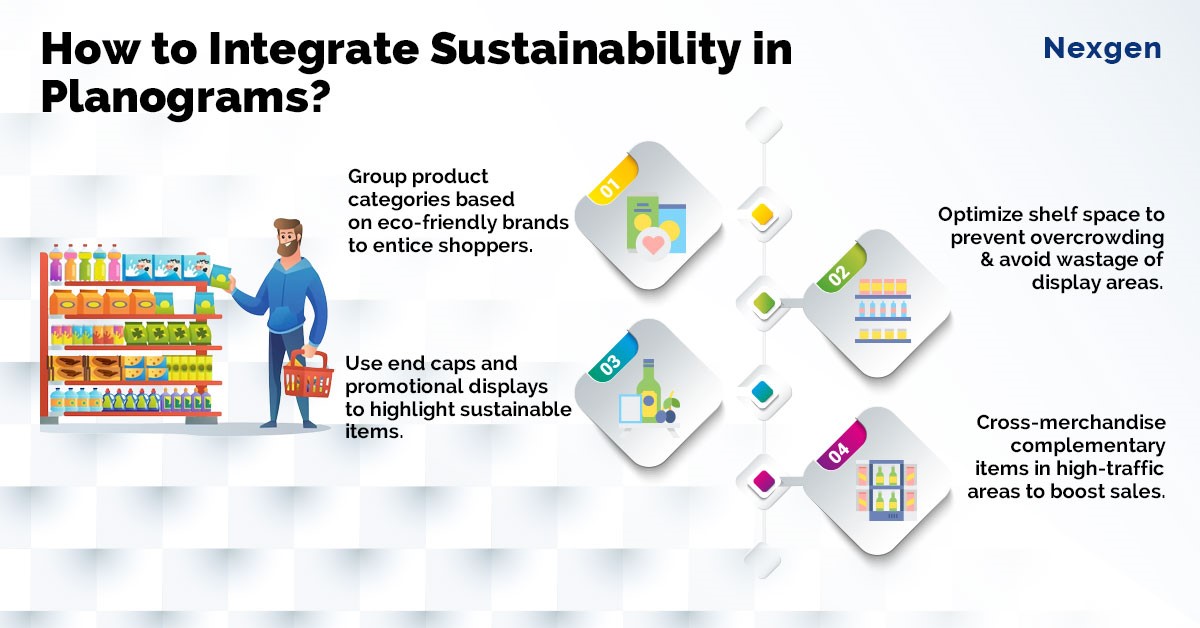In the quest for a greener and more sustainable future, businesses across the globe are increasingly adopting eco-friendly practices and strategies. One area that often gets overlooked in this endeavor is the world of planograms - a crucial aspect of retail merchandising. Planograms play a significant role in organizing and displaying products on store shelves, but they can also reduce waste and foster a greener shopping experience. In this blog, we will explore the concept of sustainability in planograms and discuss ways to reduce waste and minimize their environmental footprint.
What are Planograms?
Before we delve into sustainability, let us understand what planograms are. A planogram is a visual representation of a store's layout that indicates where and how products should be placed on shelves and displays. Retailers use planograms to optimize product placement, maximize sales, and create an appealing shopping experience for customers. Today, planogram manufacturers have come up with new solutions called planogram services to create custom fixtures and optimize sales. These merchandising tools consider factors such as product popularity, seasonality, and shelf space availability.
Integrating Sustainability into Planograms:
By adopting sustainable practices in planograms, retailers can make a positive impact on the environment and reduce waste. Here are some strategies to achieve this:

- Data-driven planning: Utilize sales and inventory data to create planograms that accurately reflect consumer demand. By stocking shelves with products that customers are more likely to buy, retailers can reduce overstocking and waste. Since customers are increasingly drawn to eco-conscious brands, grouping products based on various categories and usage patterns can make it easier for them to find what they need. This reduces the time they spend searching and handling products, reducing the risk of damage or spills. For example, place all cleaning products together in one zone, with clearly labeled signs indicating eco-friendly options.
- Implement eco-friendly packaging: Encourage suppliers to use sustainable packaging materials that are recyclable, biodegradable, or made from post-consumer waste. Additionally, consider minimizing excessive packaging for promotional displays. For example, encourage suppliers to switch from plastic to paper or compostable packaging for their products.
- Minimalist approach to planograms: Optimize shelf space to prevent overcrowding and avoid wastage of valuable display areas. This allows each product to stand out, making it easier for customers to make choices and reduce the chances of products going unnoticed or expiring. For example, instead of displaying ten different variations of the same product, offer the most popular or eco-friendly options.
- Green end caps and promotional displays: Use end caps and promotional displays to highlight sustainable and eco-friendly products, drawing attention to their benefits. For example, create a display featuring reusable water bottles, biodegradable cleaning products, or energy-efficient light bulbs. Use clear signage to inform customers about the eco-friendly features of products, such as being recyclable, made from recycled materials, or having eco-certifications. Place labels next to products indicating their eco-friendly attributes, such as ‘Made from 100% recycled materials’ or ‘Biodegradable packaging.’
Overview of Nexgen POG
Nexgen POG is a robust and user-friendly cloud-based visual merchandising tool. It is designed for quick and efficient planogramming with minimal effort. Planogram in retail can be designed by easily dragging and dropping the products. The multi-device compatibility feature of POG allows you to obtain, share and edit planogram on any device, including your phone. It helps in designing store-specific planograms for increased product visibility and sales.
Get Your Free Trial Now!